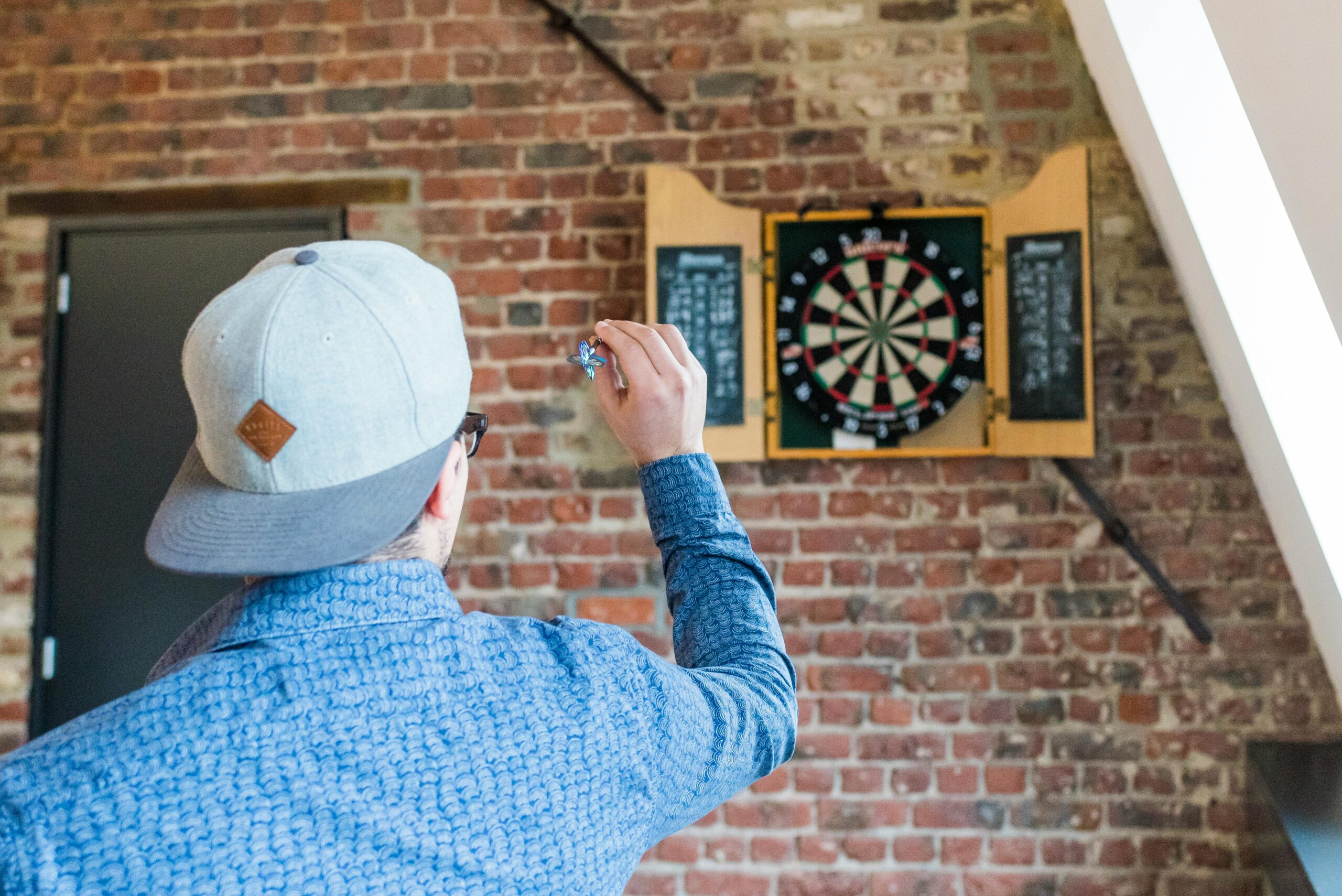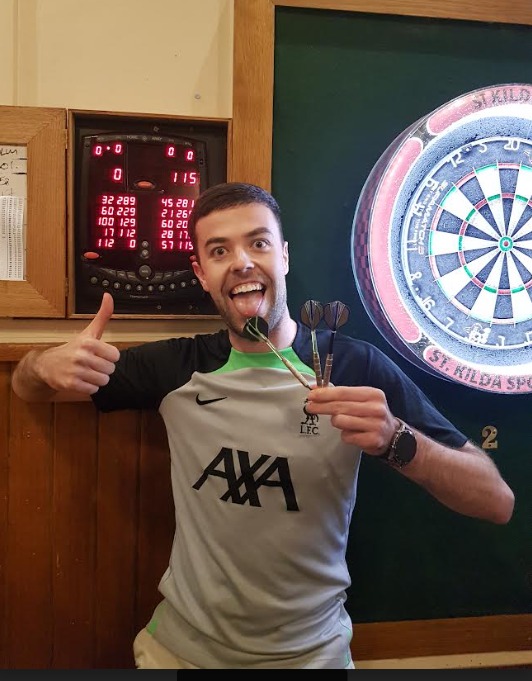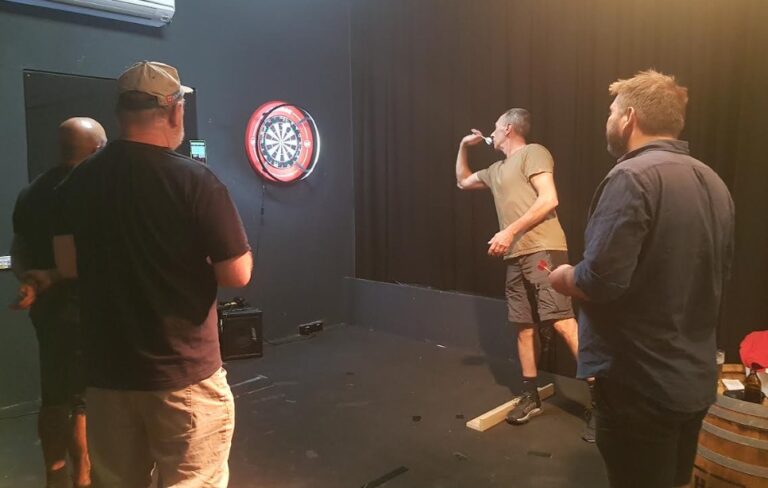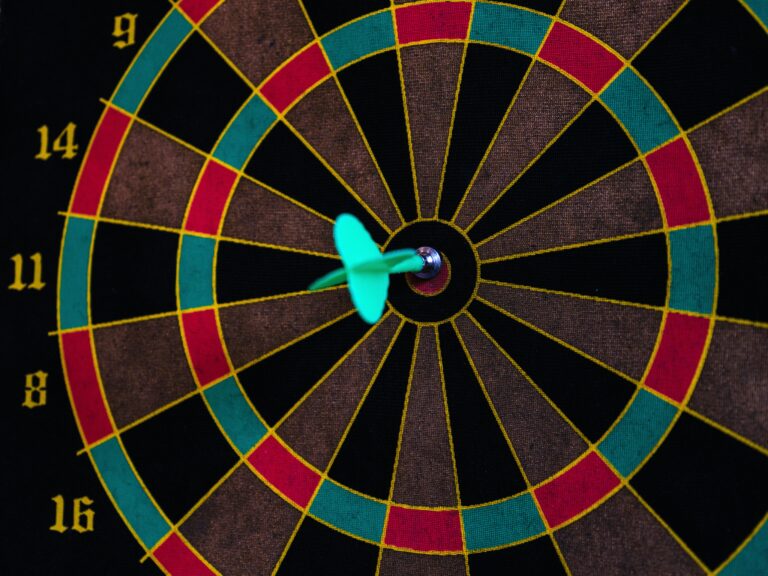Top Dart Grip Techniques for Beginners
If you’re new to dart throwing, understanding the top dart grip techniques can greatly improve your accuracy and control. The three-finger grip offers a balanced hold that’s easy to master, while the four-finger grip provides added precision. You might find the pen grip more intuitive, mimicking how you hold a pen for a relaxed release. Alternatively, the pencil grip is both comfortable and straightforward, making it ideal for beginners. Finally, the V-grip enhances stability and accuracy with unique finger positioning. Curious about which technique might suit you best? Let’s explore how each grip can elevate your game.
Key Takeaways
- Three-Finger Grip: Ideal for beginners, offering balanced control and stability for improved accuracy.
- Four-Finger Grip: Maximises control and precision, with all fingers securing the dart barrel firmly.
- Pen Grip: Provides a relaxed hold similar to writing, allowing smooth release and easy adaptation.
- Pencil Grip: Intuitive and familiar, offering enhanced accuracy and comfort for beginners.
- V-Grip: Ensures a comfortable and secure hold, enhancing stability and shot precision.
Three-Finger Grip
The three-finger grip, involving your index finger, middle finger, and thumb, is ideal for beginners seeking stability and control. This grip allows you to hold the dart in a balanced manner, which enhances the accuracy of your throws. By distributing the dart’s weight across these three fingers, you achieve a steady hold that makes it easier to aim and release the dart smoothly.
Beginners often find this grip style easier to learn and master compared to others. That’s because it offers a good balance between control and comfort. When you use the three-finger grip, you’ll notice that it feels natural and secure, providing a reliable foundation for improving your dart-throwing skills.
To get the most out of this grip, practice consistently. Regularly using the three-finger grip will help you refine your technique and improve your accuracy and precision over time. Remember, the key to mastering any skill is repetition and patience. So, keep at it and you’ll soon see the benefits.
Four-Finger Grip
Embrace the four-finger grip to gain maximum control and stability in your dart throws. This grip is ideal for beginners who want to develop a strong and consistent throwing technique. By using all four fingers—index, middle, ring, and pinky—you’ll secure the dart barrel firmly, which enhances your precision and accuracy.
To start, place your index finger along the side of the dart barrel. Then, position your middle finger underneath the barrel, giving it a solid base. Your ring finger should rest on the other side of the dart, balancing the pressure applied by the index finger. Lastly, let your pinky finger touch the barrel lightly, adding an extra layer of control.
Here’s a quick guide to positioning and pressure for each finger:
| Finger | Position | Pressure Level |
|---|---|---|
| Index | Along the side | Moderate |
| Middle | Underneath the barrel | Firm |
| Ring | Opposite the index | Light |
| Pinky | Lightly touching the barrel | Minimal |
Experiment with these positions and pressure levels to find what works best for you. Practice the four-finger grip regularly, and you’ll see improvements in your dart-throwing accuracy and consistency.
Pen Grip
When you’re starting out, try the pen grip, which involves holding the dart between your thumb, index, and middle fingers just like a pen. This grip offers stability and control, making it a great option for beginners who want to throw darts accurately.
To get the most out of the pen grip, keep your hold relaxed. Avoid squeezing the dart too tightly; a loose grip guarantees a smooth release. Tension can lead to erratic throws, so focus on maintaining a light touch.
Experiment with the positioning of your fingers to find what feels most comfortable and effective for you. You might need to adjust where your thumb and fingers sit on the dart to get the best balance and control. Everyone’s hands are different, so don’t be afraid to tweak your grip.
Consistent practice with the pen grip is key. The more you practice, the more you’ll develop muscle memory, which will enhance your dart-throwing skills over time. By sticking with this grip and refining it as you go, you’ll build a solid foundation for more advanced techniques later on. Keep practicing, and you’ll see progress!
Pencil Grip
Holding the dart like a pencil offers beginners a straightforward and intuitive grip that can greatly enhance accuracy. With this technique, you place your index finger on the front of the dart and use your thumb to support it from underneath. This method is popular among beginners due to its simplicity and ease of control.
The pencil grip allows for a comfortable and stable hold, promoting accuracy in your dart throwing. The familiarity of holding a dart like a pencil makes it feel more natural, especially if you’re new to the game. Many players find this grip more intuitive compared to other styles, making it easier to focus on your aim and release.
To get the most out of the pencil grip, practice is key. Regularly using this grip will help you develop consistency and precision in your throws. It’s important to find a balance between a firm hold and a relaxed hand to maintain control without tension.
Over time, you’ll notice improvements in your accuracy and confidence at the dartboard. So, grab your dart, hold it like a pencil, and start practicing to see the benefits of this simple yet effective grip.
V-Grip
Mastering the V-Grip can greatly enhance your dart-throwing accuracy and stability. This technique involves holding the dart with your thumb, index, and middle fingers, forming a V shape. It might feel a bit different at first, but you’ll soon appreciate the control it offers.
The V-Grip is popular among beginners because it provides a comfortable and secure hold on the dart. When your fingers form a V, you get better stability during the throw. This can lead to more consistent and precise shots.
Make sure to practice maintaining a consistent V shape to see noticeable improvements in your accuracy.
Experiment with different finger positions within the V-Grip to find what’s most comfortable for you. Everyone’s throwing style is a bit different, so adjusting the grip to suit your hand and throwing motion is crucial.
Conclusion
You’ve now got the lowdown on the top dart grip techniques. Remember, starting with the basics, like the pencil grip, can be as easy as pie.
Then, as you get comfortable, experiment with the three-finger, four-finger, pen, and V-grips to find what works best for you.
Consistent practice with these grips will help you develop a solid foundation.
So, grab your darts, hit the board, and watch your accuracy improve over time.
Happy throwing!







